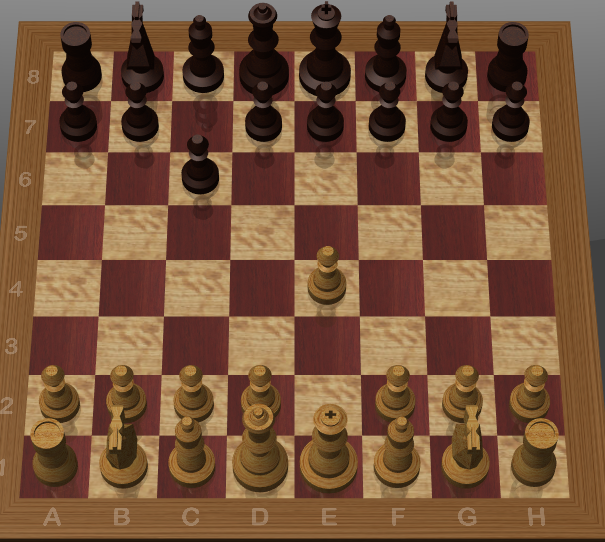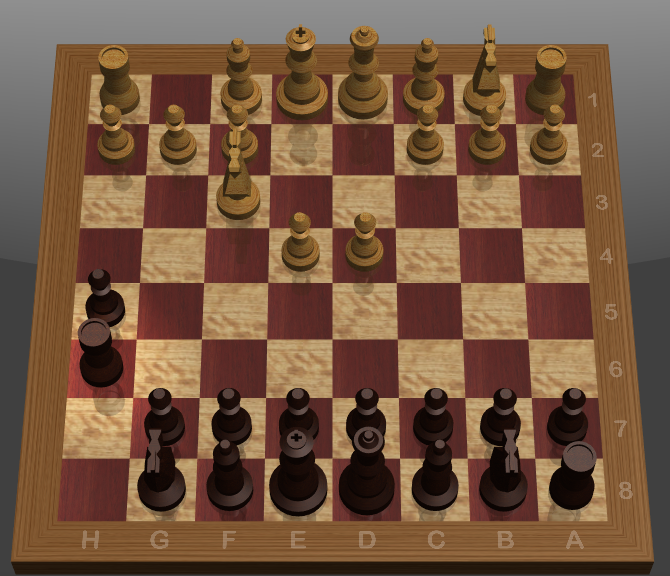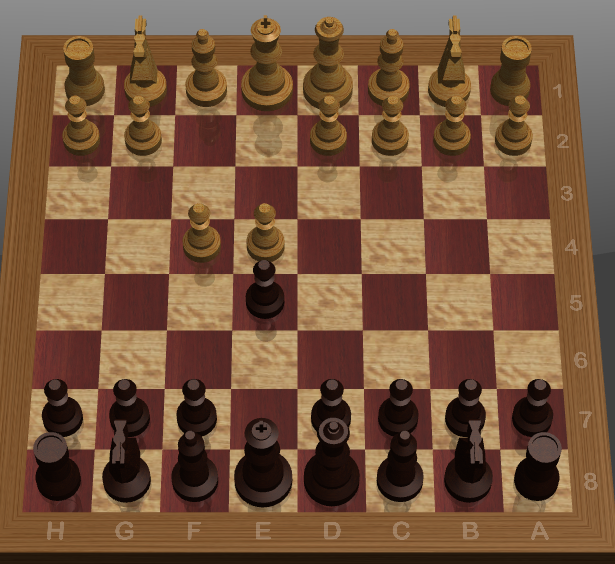The four knights game is an opening that lets both sides develop and contest the center.
- e4 e5
- Nf3 Nc6
- Nc3 Nf6
- Bb5
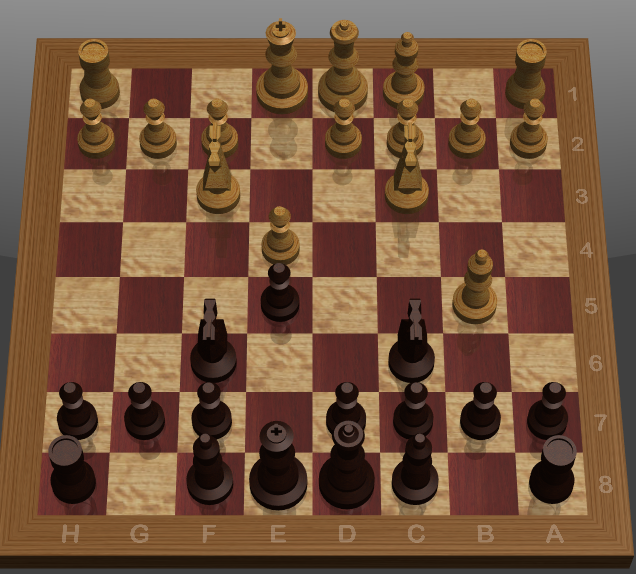
Both sides develop their king pawns. White moves the king knight to f3, both developing the knight and threatening the pawn at e5. Black responds by developing the queen knight and protects e5 at the same time. White then moves the queen knight to c3. Black responds by developing its own king knight and potentially threatening the pawn at e4. White responds by developing the king bishop and threatening the knight at c6, hoping to forestall d5 on black’s part.
Black must now be wary about copying white’s moves much longer. Many recommend deviating around move seven. So, in response to white’s fourth move:
4. … Bb4
5. 0-0 0-0
6. d3 d6
7. Bg5 BxNc3
8. b2xB
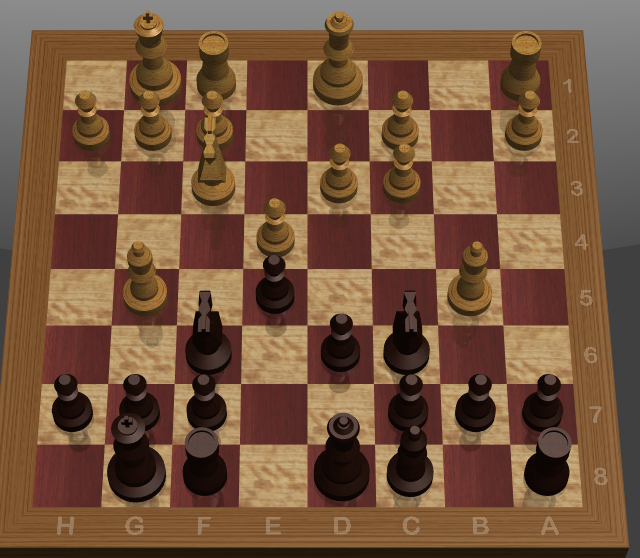
Both sides have castled. White has developed both bishops. Black threw a wrench into things by taking the knight on move seven. White responds by capturing the bishop, but this has left white with a poor pawn structure. Black needs to be prepared for white to move d4, which means getting the knight at c6 out of the way and moving c7-c5. This opening does not give either side any huge advantages, but white does get to keep the initiative.
In the next post we’ll talk about the Rubenstein Defense, which presents some interesting challenges!

